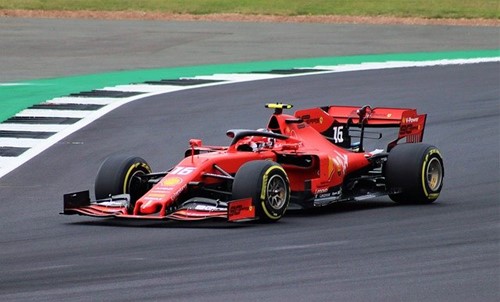

Quick guide to enjoy the Grand Prix in CDMX. Are you not a great connoisseur of Formula 1 but would you like to enjoy it to the fullest? We have a guide so you can learn a little about everything about the Grand Prix. On its marks!
The Grand Prix is one of the most important events internationally, having thousands of followers around the world and a peculiar history, beginning some activities in 1903, following a process of rules, recruiting pilots and organizers, as well as passing through the Second World War. world consolidated the International Automobile Federation 'FIA' in Paris; The first Grand Prix on May 13, 1950 at the Silverstone circuit in the United Kingdom, won by the Italian Guiseppe 'Nino' Farina, starting an international event celebrated for 68 years.
This 2017 F1 began on March 24 and ends on November 26 in Yas Marina, United Arab Emirates, with 20 races in total on the calendar; In Mexico it will be held from October 27 to 29 at the Autódromo Hermanos Rodríguez, having a distance of 4,304 km, with 71 laps and a race distance of 305,354 km. Now that we know a little about the history and the country's circuit, we are going to start with teams and drivers.
What is it and how many teams exist? A team is a competition team, integrating drivers, manufacturers, vehicles and the technical staff that assists them during the journey. There are 10 teams for 2017, with their main drivers:
Mercedes AMG Petronas Motosport - Lewis Hamilton
Valtteri Bottas Red Bull Raicing - Daniel Ricciardo
Max Verstappen Scuderia Ferrari - Sebastian Vettel
Kimi Räikkönen Sahara Force India F1 Team - Sergio Pérez m
Esteban Ocon Williams Martini Racing - Lance Stroll
Paul Di Resta McLaren Honda - Stoffel Vandoorne
Fernando Alonso
Jenson Button Scuderia Toro Rosso - Pierre Gasly
Daniil Kvyat
Carlos Sainz Hass F1 Team - Romain Grosjean
Kevin Magnussen Renault Sport F1 Team - Nico Hülkenberg
Jolyon Palmer
Carlos Sainz Sauber F1 Team - Marcus Ericsson
Antonio Giovanazzi
Pascal Wehrlein starting the race you will be able to notice different flags that each have their meaning and are shown from different angles of the track to avoid accidents, but how many flags are there? There are 11 flags that we explain below:
![]()
It is the end of the race (Sunday) or each session of the competition (2 training sessions, 1 on Friday and another on Saturday).
This flag is very important, it means a stop in the race and it can only be flown by order of the race director. It could be due to weather or an accident. You will notice it because the drivers reduce their speed and return to the pits or pit stop ( where the pilot's workshop is located).
It announces danger and can be shown in 2 ways:
When both are in sight, it means that the SC safety car (Safety Car) is intervening on the track, reducing speed, braking or even stopping.
When there is some element on the track such as oil or car fragments, it causes a decrease in grip. It may also be when the track is dry and it starts to rain, drivers will reduce speed.
After a danger on the track, this flag will be shown to continue the race as normal, it is also shown during warm-up or in a training race to confirm that everything is in optimal conditions.
This flag is a bit complex, since its meaning depends on where it is displayed:
Announces a slow vehicle on the track, whether it is a racing vehicle or an emergency vehicle.
It is not very common due to the technology and communication between the team and the driver, since this means that the vehicle has problems and must go to the pit lane as soon as possible.
This flag is not good for a driver, since it is a penalty for performing an unsportsmanlike maneuver.
This is the worst flag for a race, since the driver performed a seriously unsportsmanlike maneuver, being sanctioned with exclusion from the competition.
On no occasion should you overtake (except for the blue flag that gives way) or the driver will be penalized with danger of expulsion. Now that we know about flags and that there are penalties, what are the penalties?

A 10-second penalty, the driver must enter the pits without the team touching the vehicle, he will only have to wait for the time to resume the race.
The driver must pass through the pit lane without stopping.
The driver must give up 10 places in the next race, it is due to the engine change without finishing the cycle.
Yes, what you imagine, he must give up 5 places in the next race, this is due to the gearbox change without finishing the round.
Whether in the race or in qualifying, seconds are added to the final time obtained in the last lap, with a possible loss of position.
As we mentioned, when the black flag is shown, the driver is expelled, since it automatically disqualifies him. It is used only when the split flag has already been used and the driver continues to have an unsportsmanlike attitude or has caused a dangerous situation for his teammates.
It's like a speeding violation. How? Yes, the fastest cars in the world must also be careful with infringements, since they must respect the maximum speed allowed in the pit area.
It may also be that the driver does not apply the 10-place penalty or will not race in the next Grand Prix. We already talked about the bad things that happen in races, now how do they win? The runners earn points with the position they obtain after traveling the 305 km, in each race the first 10 will be awarded a score that at the end of the season is added to have the Drivers' Champion, as well as the Constructors' Champion, who They are obtained independently of the pilot.
1st Place - 25 points 2nd Place - 18 points 3rd Place - 15 points 4th Place - 12 points 5th Place - 10 points 6th Place - 8 points 7th Place - 6 points 8th Place - 4 points 9th Place - 2 points 10th Place - 1 point Likewise, a winner is obtained for each Grand Prix (in the city) that is obtained by time and the addition of any penalty.
Now that you know the basics to enjoy this international spectacle, you can't miss the Grand Prix in Mexico City this end of the month. Still don't have accommodation from October 27 to 29? Zócalo Central and Histórico Central, is located 30 minutes by car from the Autódromo Hermanos Rodríguez, where you can experience the adrenaline of Formula 1 at full speed!